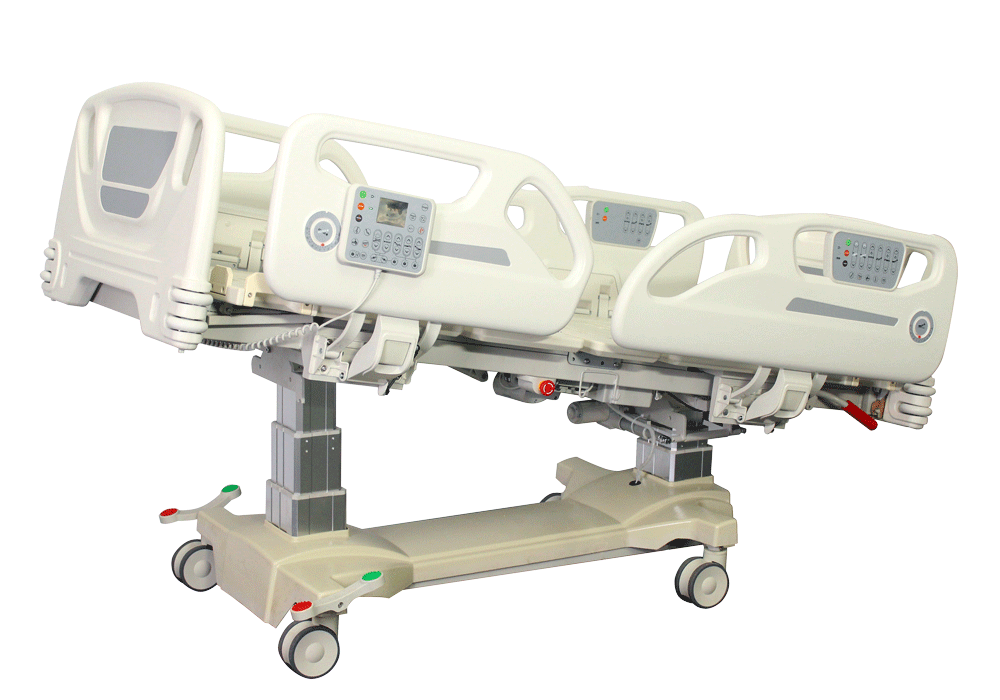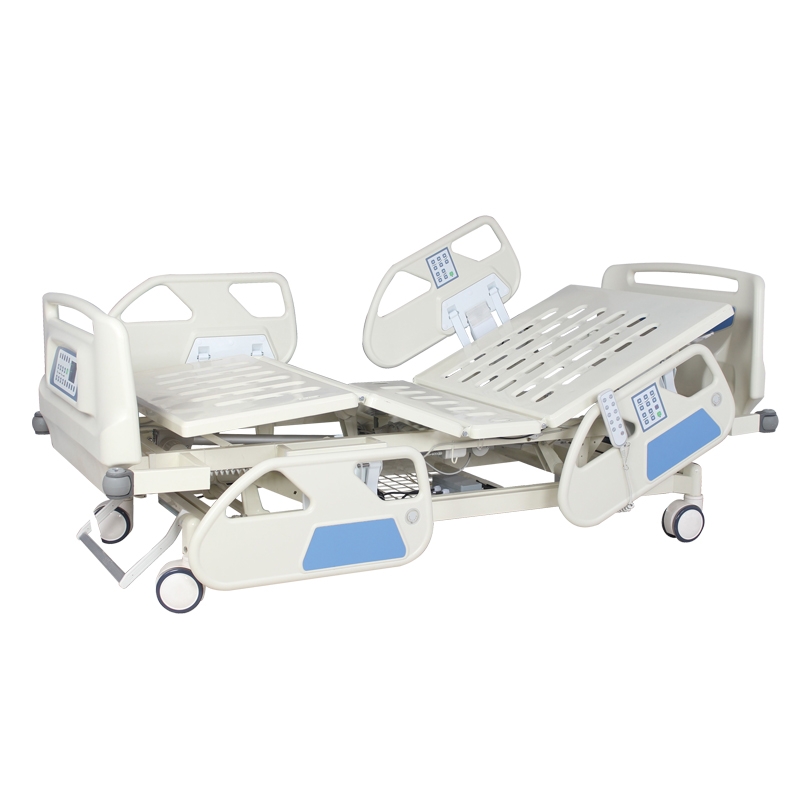ICU (abbreviation for Intensive Care Unit) is the intensive intensive care unit. Intensive care is a medical organization management that integrates modern medical care technology with the development of professional medical care, the birth of new medical equipment and the improvement of hospital management system. form.
First, let ’s take a look at one of the most developed countries in the world

U.S. ICU construction:
In this video, Laura Shoemaker, a staff member of the Institutional Design Office of the Cancer Institute, introduces their new ICU layout and environment that will be put into use. After two years of careful planning, here you can not only enjoy the beautiful scenery of western New York, but also feel the peaceful and peaceful atmosphere. The ICU is equipped with a central station (core area), important displays, control walls (Have you heard of it?), Nutrition stations, ambulances, supply stations and thoughtful kitchenettes, seating areas, comfortable sofas and seats, etc. Bring a new medical experience to patients and their families.
In the construction of ICU, Germany is also a very mature country.
The project will be contracted to a qualified specialized company. It will be meticulous from design to final completion. It has both strong practicality and broad prospects.
For example, in the neurological ICU, there are more than 90 power sockets on the bedside pipeline system. There is plenty of room for ergonomic designs that take care of future expanded functions like this.
In summary, the characteristics of the entire European country are: the ICU with the strongest comprehensive treatment strength and the most representative level of guardianship often belongs to the anesthesiology department. This is mainly due to historical reasons, because the earliest monitoring was led by anesthesiologists.
Anesthesiologists in contemporary Germany are responsible for the daily tasks of anesthesia, pain, emergency and intensive care. Therefore, the ICU of the anesthesiology department can best represent the current level of treating critical illness.
Every instrument and every device in German hospital ICU is not necessarily very advanced or new. Many of them are the same as the domestic configuration, but they must be used to their fullest extent to maximize the use of instrument treatment and life support. For example, the bedside blood gas machine is equipped with a bar code identifier. By scanning the patient-specific barcode, each blood gas measurement value can be directly entered into the patient’s electronic medical record. The so-called monitoring system, in most of the country, can only record the vital indicators, but basically it is impossible to record the parameters of the ventilator, hemofiltration machine and infusion pump in real time.
It can be seen that the biggest problem in China at present is not whether the equipment is available or not, but whether it is used or not, and how to use it.
The application range of ICU is expanding day by day, and it is continuously progressing and popularizing. How to make more reasonable and effective use of space, manpower, and funds to configure, manage, and maintain its equipment has become a very important issue.
Next, we will introduce three aspects of the ICU’s infrastructure configuration, equipment configuration and purchase, and equipment security and maintenance.
1
ICU infrastructure configuration
The patients in the ICU ward are different from the patients in the general ward. Therefore, the layout design, environmental requirements, bed functions, and peripheral equipment of the ward are different from those in the general ward. Moreover, the ICU in different specialties requires different equipment Not the same. The ward design and equipment configuration should meet the needs, facilitate rescue, and reduce pollution.
Such as: laminar flow equipment. ICU’s anti-pollution requirements are relatively high. Consider using laminar flow purification facilities to reduce the chance of infection. In the ICU, the temperature should be maintained at 24 ± 1.5 ° C; in the ward of elderly patients, the temperature should be around 25.5 ° C.
In addition, the small operating room, dispensing room, and cleaning room of each ICU unit should be equipped with back-illuminated hanging ultraviolet lights for regular disinfection, and an additional ultraviolet disinfection vehicle should be provided to regularly disinfect unmanned spaces.
In order to facilitate rescue and transfer, in the ICU design, it is necessary to ensure sufficient power supply. It is best to have dual power and emergency power. Important equipment should be equipped with uninterruptible power supply (UPS).
In the ICU, there should be multiple gas pipelines at the same time. It is best to use the center to supply oxygen, the center to supply air, and the center to vacuum. In particular, the central oxygen supply can ensure that the ICU patients continuously inhale a large amount of oxygen, eliminating the need to frequently replace the oxygen cylinder, and avoiding the pollution that the oxygen cylinder may bring into the ICU.
2
ICU equipment configuration and purchase
The selection of ICU beds should be suitable for the characteristics of ICU patients and should have the following functions:
1. Multi-posture adjustment can meet different clinical needs.
2. It can help the patient to assist in turning over by foot or hand control.
3. Convenient operation can control the movement of the bed in various directions.
4. Accurate weighing function. In order to closely monitor changes in fluid exchange, fat burning and sweat secretion.
5. The back X-ray filming needs to be completed in the ICU, so the back plate needs to be equipped with an X-ray film box slide rail.
6. Able to move and brake flexibly, facilitating rescue and transfer.
At the same time, the headboard of each bed should be provided with:
1 power switch, multi-purpose power socket that can connect 6-8 plugs at the same time, 2-3 sets of central oxygen supply devices, 2 sets of compressed air devices, 2-3 sets of negative pressure suction devices, 1 set of adjustable brightness headlights, 1 set of emergency lights. Between the two beds, a two-sided function column should be set up, which is equipped with power sockets, equipment shelves, gas interfaces, call devices, etc.
The monitoring device is the basic equipment of the ICU. The monitor can monitor waveforms or parameters of multi-lead ECG, blood pressure (invasive or non-invasive), breathing, blood oxygen saturation, temperature, etc. in real time and dynamically, and can measure the measured parameters. Perform analysis processing, data storage, waveform playback, etc.
In the design of ICU, the type of patient to be monitored must be considered in order to select the appropriate monitor, such as cardiac ICU and infant ICU, the functional focus of the required monitor will be different.
ICU monitoring equipment is equipped with single bed independent monitoring system and central monitoring system.
Multi-parameter central monitoring system is to monitor various monitoring waveforms and physiological parameters obtained by the bedside monitor of each bed patient through the network, and simultaneously display them on the large screen monitor of the central monitoring, so that medical staff can Implement effective real-time monitoring.
In modern ICU, a central monitoring system is generally established.
Different types of ICUs are equipped with special equipment in addition to conventional equipment and equipment.
For example, in cardiac surgery ICU, continuous cardiac output monitors, balloon counterpulses, blood gas analyzers, small rapid biochemical analyzers, fiber laryngoscopes, fiber bronchoscopes, and small surgical equipment, surgical lights must be provided. , Disinfection supplies, 2 sets of open chest surgical instrument kits, surgical instrument tables, etc.

3
Safety and maintenance of ICU equipment
ICU is a place where a large number of electrical appliances and medical equipment are used intensively. There are many high-current and high-precision medical equipment. Therefore, pay attention to the safety of the equipment’s use and operation.
In order to ensure that the medical equipment works in a good environment, it should first ensure that the device is provided with a stable power supply; the position of the monitor should be set a little higher, which is easy to observe and away from other equipment to avoid interference with monitoring signals .
Modern ICU equipment is equipped with high technical content and professional requirements for operation.
In order to ensure the normal operation and use of ICU equipment, ICU wards in large hospitals should have full-time maintenance engineers to guide doctors and nurses to correctly use the equipment; assist doctors in setting machine parameters; and are generally responsible for maintaining and replacing equipment after use Damaged accessories; regularly test the equipment and regularly perform measurement and calibration as required; repair or send the faulty equipment in a timely manner; register the use and repair of the equipment, and establish ICU equipment files.


